Calais 1958
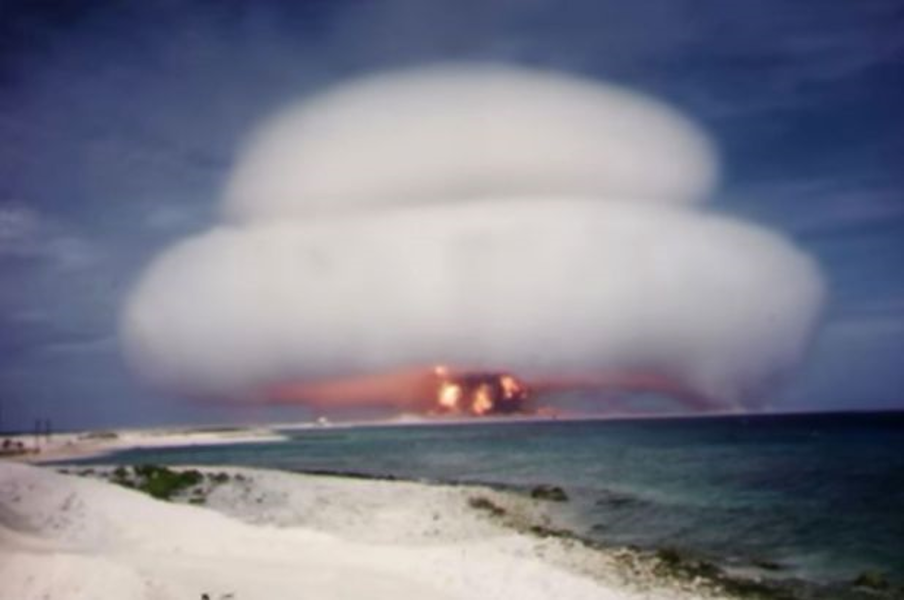
The world in 1958 was both transfixed and terrified by the nuclear arms race between the Soviet Union, England, and the U.S. The development of this new and more powerful nuclear “fusion” bomb had raised the stakes dramatically and testing of the new weapons was a regular event. The Russians, perhaps sensing they were falling behind in the race, proposed a suspension of nuclear arms testing but the U.S refused. In Calais schools we were thought how to tuck our head between our legs as we squatted under our desks or, if we had time, to evacuate to a safer part of the school. Hoarding canned food for storage in the family fallout shelter was highly recommended as was digging up a very deep one in the back yard in the event the family couldn’t afford to build the type recommend by the government.
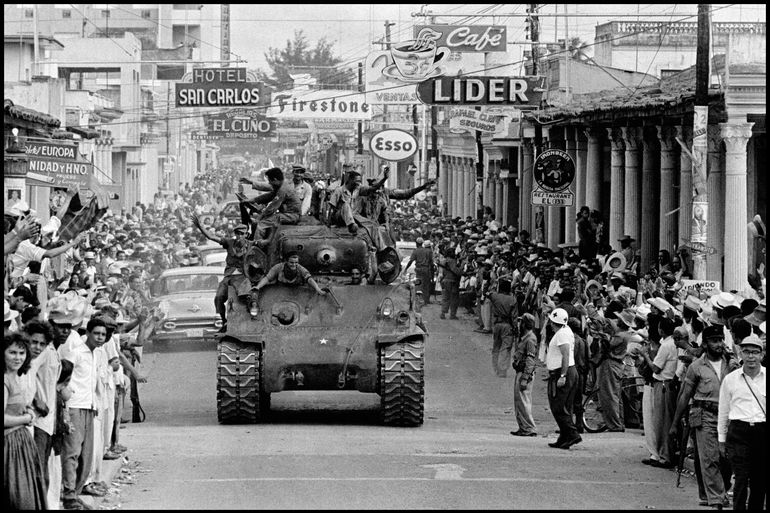
This tension made the attempt by the leftist Fidel Castro (who was suspected of anti-American, and worse, pro-Soviet sympathies) to overthrow the government of Fulgencio Batista in Cuba, a U.S. ally, a serious concern in 1958; but few suspected Batista would pack his bags which contained, presumably, his very substantial and questionably-acquired wealth and flee the country on the last day of the year. After all, Castro was not yet near Havana in any force. The photo above shows Castro’s troop triumphantly entering the city unopposed a few days after Batista bolted. Almost as unhappy about this turn of events was the Mafia whose bosses operated the cash cow casinos in Havana.
[The automobile in the background is a 1955 Oldsmobile—and is likely still being driven today.]

There is a Calais connection to at least the aftermath of these events. When it became apparent Castro was less than a fast friend of the U.S., most diplomatic and economic ties with between the countries were cut. There were times when the Cuban government needed assistance harvesting its sugar crop, and Cubans saw an influx of youthful idealists from all over the world to help in the harvest including some from the U.S. The above photo shows one of the 100s of Americans who had traveled to Cuba through Canada in 1970 returning to the U.S at Calais. Busloads arrived, all were thoroughly searched, and nearly everything the occupants had brought back with them from Cuba was confiscated including books and leaflets which may have contained “Communist propaganda.” This mass of confiscated material occupied much of the third floor of the Calais customs house for many years and is possibly still there.
In other world news of 1958 Nikita Khrushchev became the leader of the Soviet Union and Charles De Gaulle the President of France. Both proved to be thorns in the side of U.S. diplomacy for many years.
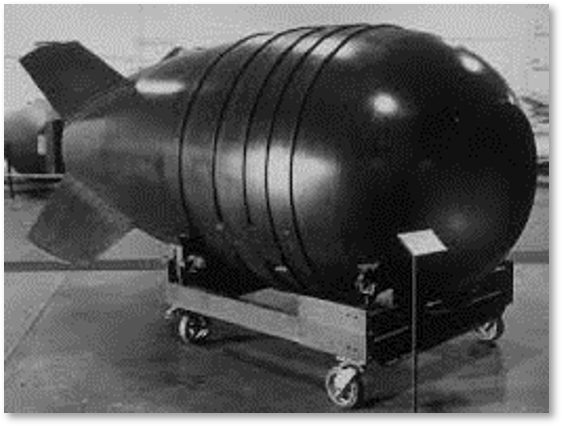
In the U.S in 1958 a nuclear bomb was dropped on Mars Bluff, South Carolina. While the U.S. would dearly have loved to blame this on the Russians, the culprit was the U.S. Air Force which somehow (the details remain unclear) accidentally dropped a nuclear bomb like the one shown here on the sleepy hollow on March 11, 1958. The 6000 pounds of conventional explosive which was the trigger for the nuclear component of the bomb exploded and created a large crater. Thankfully the nuclear component of the weapon did not explode as either the nuclear payload wasn’t loaded in the warhead or didn’t detonate. The bomb was twice the size of the one dropped on Hiroshima. The many contradictory explanations for the accident are too numerous to relate so we will leave it to those interested to “Google” it.
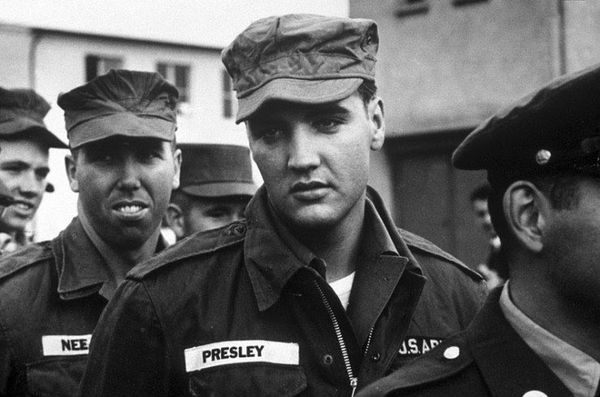
Equally important as the nuclear attack on South Carolina was the drafting of Elvis Presley into the U.S. Army. It also got a lot more press.
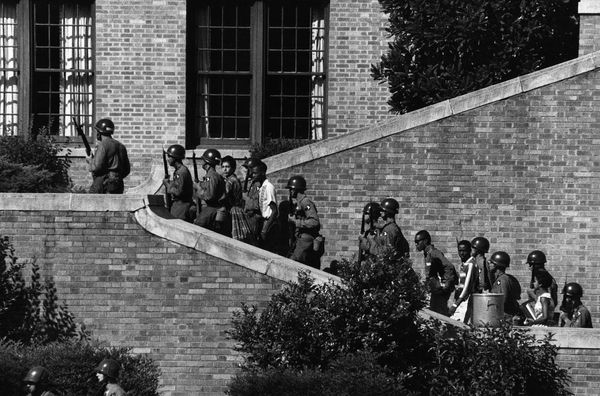
However, the most significant event of 1958 was President Eisenhower’s order to U.S. Airborne troops to escort black students into the Little Rock Arkansas High School in support of court-mandated desegregation of schools in the United States. This drama played out across the country for decades in both the South and the North—witness the Boston busing crisis of the 1970s.
In sports the Boston Bruins put the first black hockey player on the ice in 1958. William O’Ree played two seasons for the Bruins. Contrast this with the Boston Red Sox, the last team in the majors to have a black player—Pumpsie Green who played for the Sox in 1959. Speaking of the Red Sox, Ted Williams was the highest paid player in the majors in 1958 earning $135,000—$250 of which he forfeited as a fine for spitting at fans in Kansas City. Opposing fans knew of William’s hair trigger temper and relentlessly baited him. He had previously paid a $5000 fine for the same offense. Arnold Palmer won the first of his four Masters; the Yankees won the World Series—again—and the Dodgers and Giants played the first major league game on the west coast: Giants 8, Dodgers 0.
In 1958 “Bridge over the River Kwai” won both the Oscar and Golden Globe award for best picture, but kids were happier at the debut of Huckleberry Hound and the introduction of a new educational toy called a “Lego.” If you happen to have one of these originally sets it is 1) worth a fortune and 2) still compatible with today’s Legos. Bank of America issued the first credit card which we’re sure many today bemoan each time they open their monthly statement; and Boris Pasternak won the Nobel Prize for literature which he refused under pressure from the Russian government.
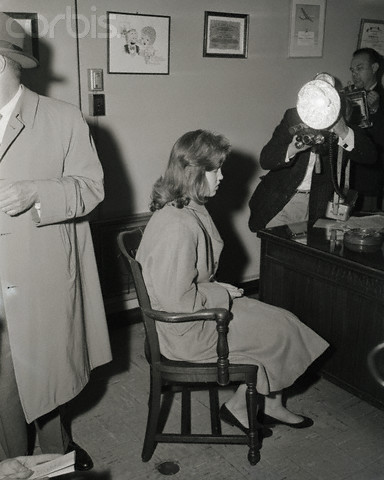
The sensational crime of 1958 (every year has one) was the killing of Lana Turner’s boyfriend, a hood and small-time mobster named Johnny Stompanato by Lana’s daughter Cheryl Crane shown above in custody after the stabbing. The killing was found justifiable given Johnny’s violent nature and history and the young lady’s claim she was protecting her mother although the facts of the case do not make a strong argument for this defense. Miss Crane went on to live a rather chaotic and dysfunctional life which you can, if you wish, check out on YouTube.
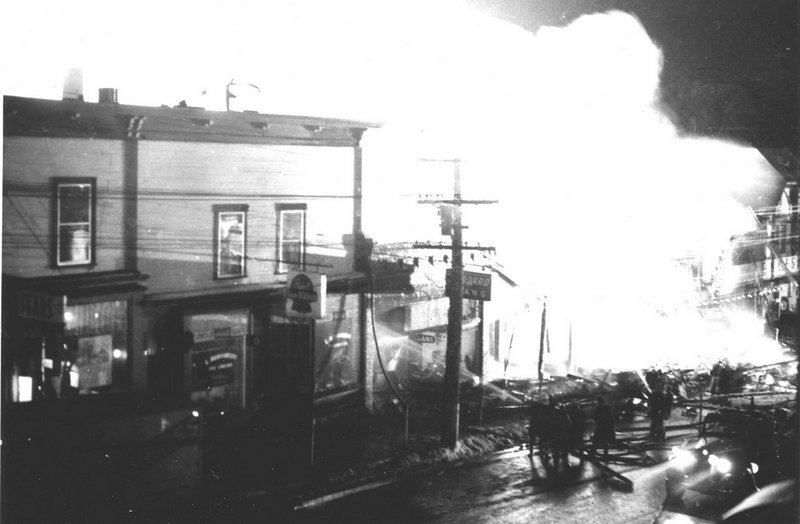
In Calais the event of the year for 1958 was the loss of the iconic State Theatre on Main Street—a truly tragic event for those growing up in Calais during the ‘50s and ‘60s. It happened March 4, 1958. The blaze was a tough one for the fire department. The Advertiser described it as the worst fire in Calais since the late 19th century. Not only did it destroy the theatre but it also destroyed several adjacent businesses and 1/3 of Unobskey’s Clothing Store. Damage estimates were $500,000. Houses on Monroe Street were evacuated, and volunteers formed lines to remove all the furnishings from the nearby residences. Fire Chief Bud Tracy was struck by burning timbers inside the building and had to hauled out of the blaze feet first and revived with a respirator which the Advertiser says, “saved his life.”
Some first-hand reminiscences from those on the scene:
Susan McCullough and Eugenia Townsend were at the movies that night. They heard some commotion and when they turned around, they saw smoke coming from the door that led to the basement. Everyone filed out of the theatre without incident and watched it burn, which it did in quite spectacular fashion.
Jerry Lapointe watched the fire from his bedroom window on High Street. His father stayed up all night ready to evacuate if the fire spread. Like many, Jerry had planned to see “Old Yeller” on Saturday. Gayle Moholland was living at the time on the corner of Monroe and Lowell; her father wasn’t taking any chances and took the kids to stay with Gayle’s grandparents for the night.
Leonard Scott says he and Linda Tokarz were the last two people to leave the theatre on the night of the fire.
Mary Casey remembers somebody coming to her front door and speaking to our mother: “The next thing I knew I was out the front door and, on my way, to stay with people I didn’t know in a house where I’d never been, and I think the same thing happened to Patsy Bernardini. I think I only stayed one night, maybe two at the most but I know I was very glad to be home. Before I left the house, I remember seeing the flames from our kitchen window. There was no way my mother was going to sleep and I remember she was making doughnuts as I was being taken away and wondering if I was still going to have a house. Scary times for a young girl. ”
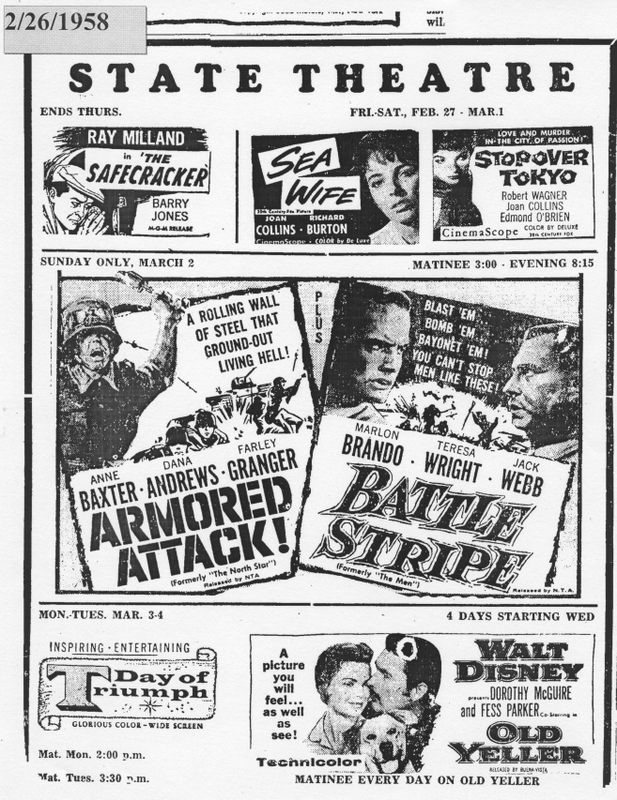
Above is one of the last ads for the State Theatre. “Old Yeller,” the much-anticipated Disney Movie, was coming on the weekend. The State was not rebuilt for a long time, and for many years a steady stream of kids from Calais trudged every weekend over the bridge to the Queen Theatre in St. Stephen. We recall at the time Canadian money was worth more than American money and we had to pay an extra two cents if we didn’t have Canadian money. Two cents bought a lot of candy in those days and we were very unhappy parting with those two pennies. “Old Yeller” was eventually shown at the Queen and drew a big crowd. It was hard to believe Walt Disney would actually kill the dog off at the end; we needed to see it.
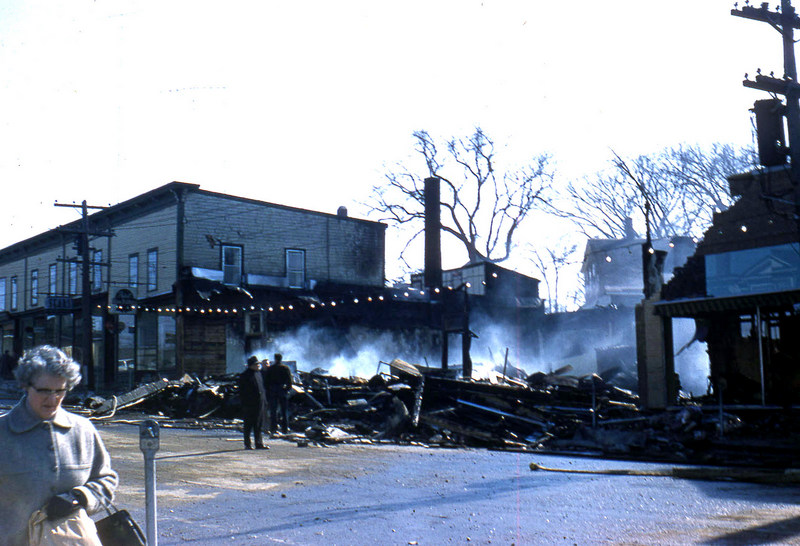
The still smoldering remains of the State Theatre the day after the fire.
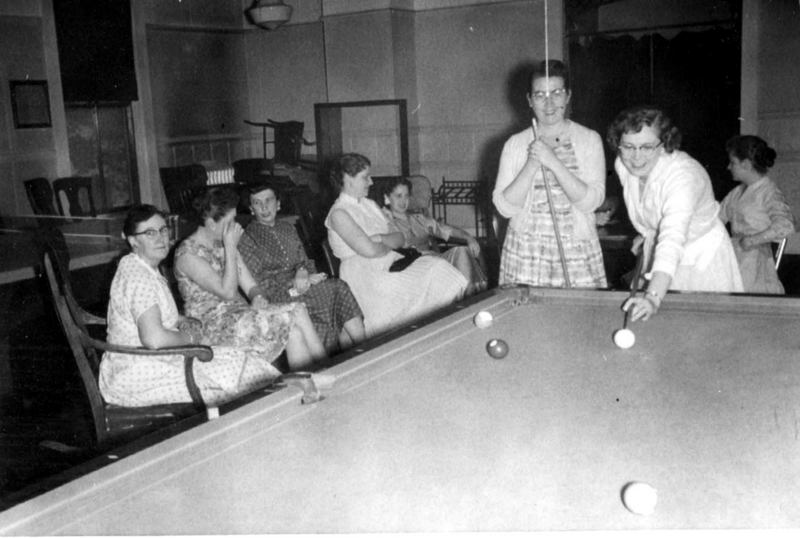
By 1958 the St. Croix Club had opened its doors to women and had become so progressive they allowed them to use the pool tables. Shown above playing pool are from the left: Louise Armstrong, Lois Alexander, Tillie Gordon, Margie Morrison, Charlotte Seamons, Betty Sherrard, Marlene Lord, and Berta Farthing. In 1958 the club installed automatic pinsetters which did speed up the bowling, but it was bitter disappointment with the youngsters who had previously made a dollar or two manually resetting the pins.
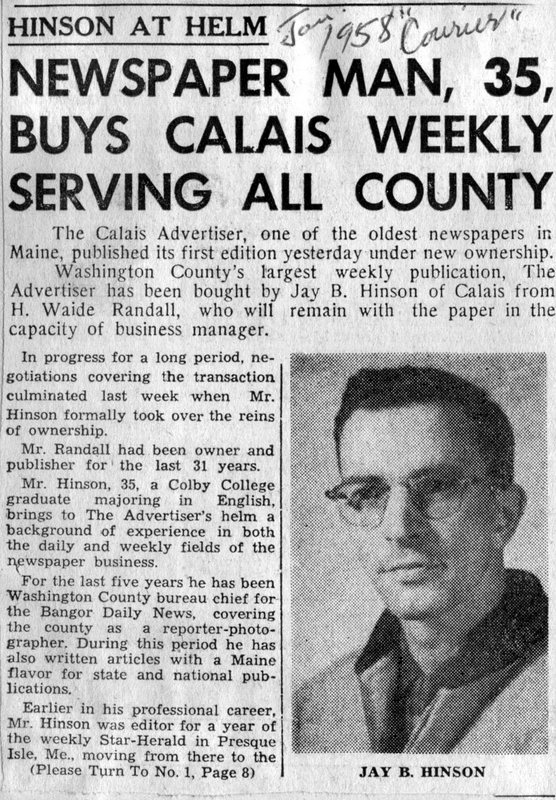
Jay Hinson became the editor of the Advertiser in 1958.
In other local news a couple from Oak Bay in St. Stephen spotted a panther roaming in their field. If this sighting is accurate it is the only known sighting of a panther in the history of the St. Croix Valley. The area’s famous naturalist George Boardman, when asked by the Smithsonian if there was any evidence of a panther in the history of the St. Croix Valley, firmly replied in the negative. In odd news of 1958, the Courier reported there was an unusual wedding at the Kirk McColl church in St. Stephen when the carnival was in town. The 752 pound “Fat Lady” of the circus who billed herself as “Baby Frances” married Fritz Voges a 139-pound carnival worker. Baby Francis’ brother and part of the act at 791 pounds was also present and the bride was given away by her son from a prior marriage.
Jean Wood was appointed principal of the Milltown High School; Ella Lowther left the employ of Jane Todd to strike out on her own as a candy maker (quite successfully we might add); and Ware Knitters began operations at its new building on North Street.
Finally, three prominent Calais citizens died in 1958. Ned Lamb, the eminent Calais historian and photographer to whom the Historical Society owes such a debt of gratitude for his preservation of the history of the St. Croix Valley, died in March. Charlie Unobskey of the prominent Unobskey family which was instrumental in making Calais into the “shopping center” of the St. Croix Valley and beyond died on a trip to Israel; and lastly, Guy Murchie, the author of the local history “The Sentinel River” died in Nassau in the Bahamas. Murchie, a Harvard man, was a friend of Teddy Roosevelt and fought with Roosevelt in Cuba. Roosevelt wrote of Murchie, “The Harvard contingent was practically raised by Guy Murchie of Maine. He saw all the fighting and did his duty with upmost gallantry and left the service as he entered it, a trooper, entirely satisfied to have done his duty–and no one did it better.”
Murchie lived an interesting life after his service in Cuba and perhaps we’ll have occasion to feature him in a subsequent email.
